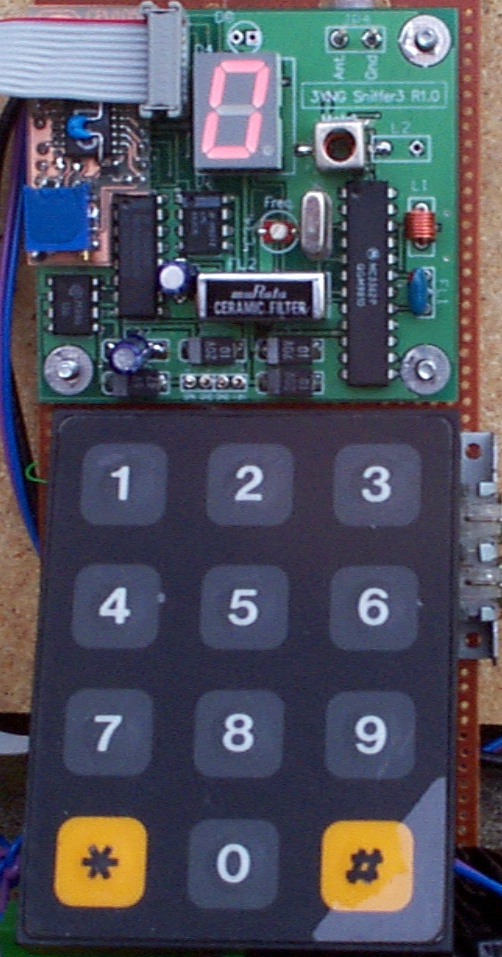| PCB Dimensions: |
61mm(H) x 66mm(W) x 17mm(D) |
| Sensitivity: |
better than -110dBm |
| Attenuation Steps: |
7, approx 15dB/step |
| Maximum input level: |
>+17dBm |
| Frequency coverage: |
144-148MHz (140-149.995MHz - reduced spec) |
| Channel Bandwidth: |
±13KHz min. |
| Supply: |
9 volts DC |
| Low battery warning: |
Approx 7.5V |
| Current: |
65mA typ (depends on selected range) |
| Running time: |
>3 hours continuous from Alkaline PP3 battery |
| Speaker Output | Speaker Ground |
Supply Ground |
Supply input (+9V) |
|
(1) Row 2
|
(2) Row 1
|
|
(3) Row 3
|
(4) Column 3
|
|
(5) Row 4
|
(6) Column 2
|
|
(7) n.c.
|
(8) Column 1
|
|
(9) Gnd
|
(10) Gnd
|
|
|
Column 1
|
Column 2
|
Column 3
|
|
Row 1
|
1
|
2
|
3
|
|
Row 2
|
4
|
5
|
6
|
|
Row 3
|
7
|
8
|
9
|
|
Row 4
|
*
|
0
|
#
|

